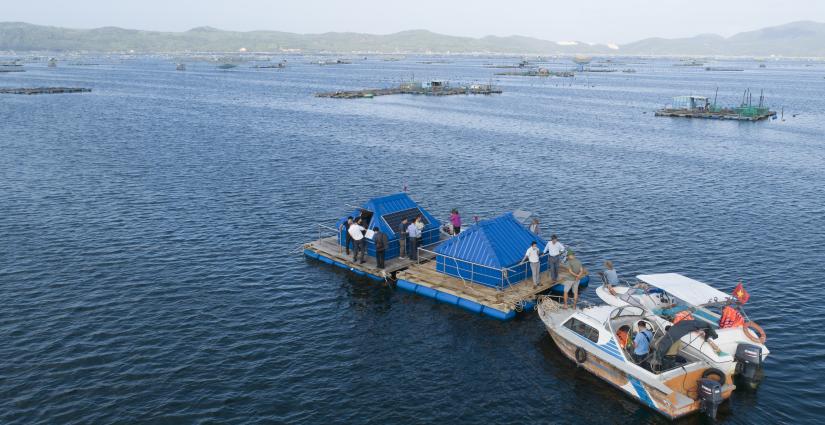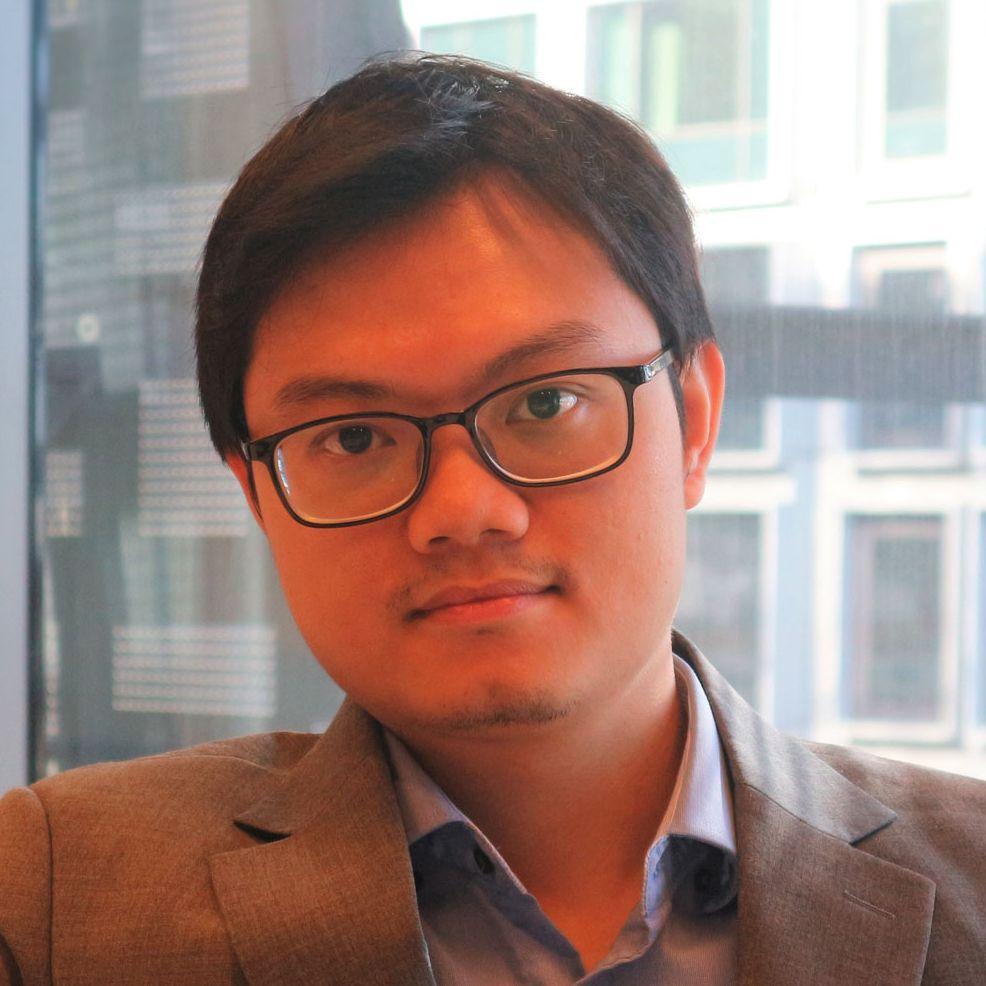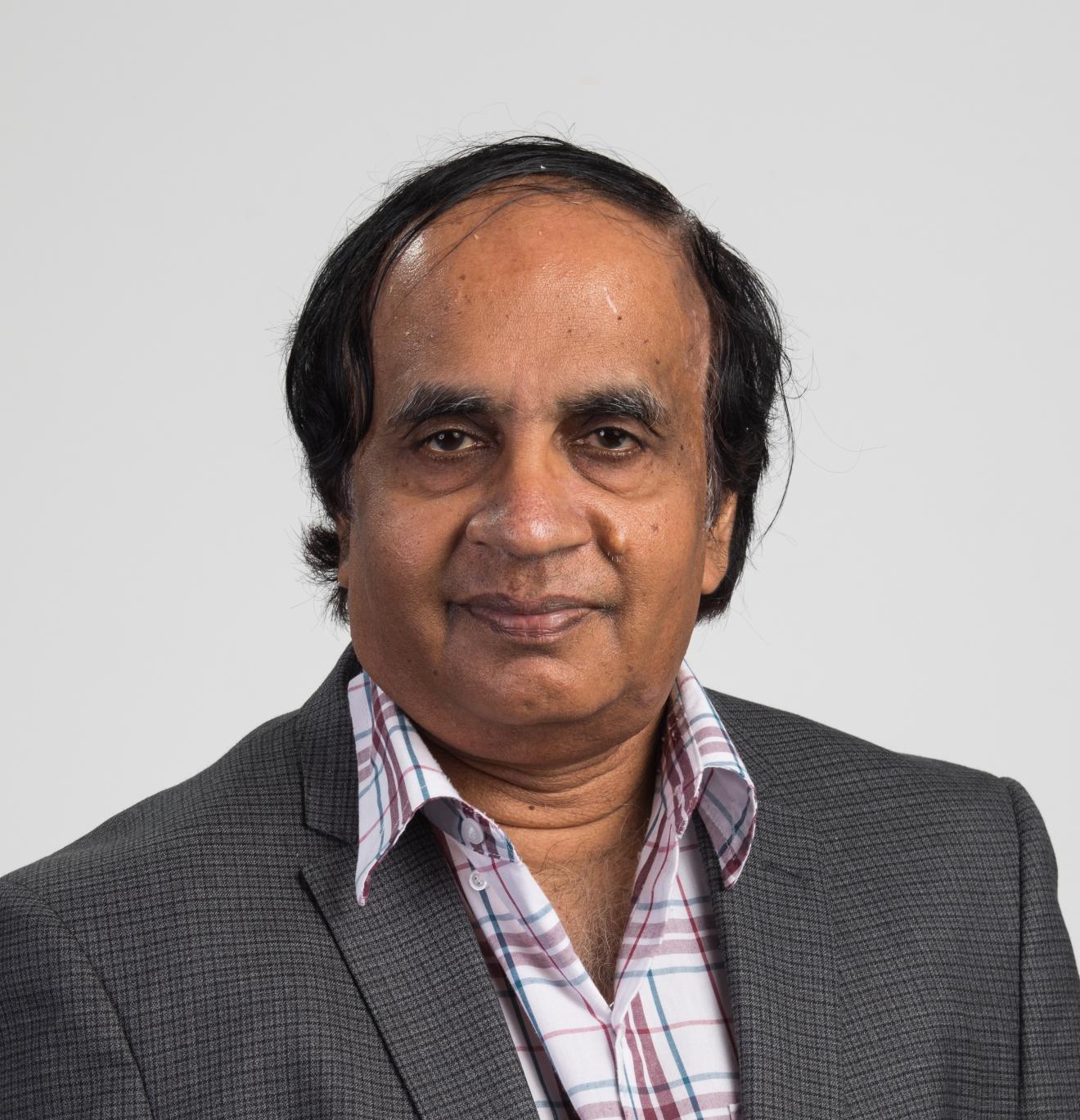A groundbreaking collaboration between UTS, Vietnam National University and Ho Chi Minh University of Technology has led to the development of a real-time sea-water monitoring system.
Four stations are now helping ensure a sustainable aquaculture industry in the Xuan Dai Bay in Phú Yên, a Central South province in Vietnam.
As the system is scalable and non-site specific, the technology has the potential to be used not just in further sites across Vietnam, but globally, and the team is actively seeking new partners to help them realise its full potential.
“Aquaculture is an important industry in Vietnam, generating an income of AUD$11 billion per year. But while it can have rich economic rewards for farmers and the regions they live, it can be a precarious livelihood,” says Professor Eryk Dutkiewicz, the chief investigator of the project at UTS.
“It’s expensive to set up and farm, particularly high value aqua species like lobster, and crops can be lost easily due to tropical storms, unforeseen changes in water conditions, and development issues such as over-farming."
Funded by Aus4Innovation, and developed under the umbrella project UTS Rapido Vietnam, the seawater monitoring project was designed to employ the latest Industry 4.0 technologies, such as Internet of Things, data analytics, and mechatronics.
The systems were also fitted with an advanced robotic maintenance mechanism to prolong sensor lifespan, which was particularly important because of the hostile conditions they were deployed into.
“Saltwater corrosion and heavy tropical storms will quickly destroy unprotected sensors. This is the first system of its kind in Vietnam and one of very few globally that are able to withstand these kinds of conditions,” says Prof Dutkiewicz.
The first system was launched onto the bay in March 2020 and, like a mini mobile lab, started collecting, analysing and processing the data.
Sampling the ocean as frequently as once every few minutes, the system measures temperature, acidity, ammonia, dissolved oxygen, salinity and turbidity, with a processing delay as small as 0.5 seconds.
If there is an issue with any of these parameters, the system automatically sends an alert via mobile app or SMS.
“When the farmers receive the alert, this is the point where their expertise takes over and they make an evidence-based decision to protect their crop,” explains Professor Dutkiewicz.
“They might decide to harvest the crop earlier than intended, for example, or they might decide to move their lobster cages to a safer location, or deeper or closer to the surface.”
The monitoring stations are now permanent fixtures on the bay and local farmers are finding them so helpful that some have volunteered to help maintain them.
This means physical safeguarding and, if they do need maintenance, calling the Rapido technical team in Ho Chi Minh City to help (a one-hour flight away from the bay).
Phú Yên was originally selected because it has more than 2,200 households related to lobster farming, with nearly 35,000 cages, harvesting approximately 150 tonnes per year and bringing about AUD$200 million of annual revenue.
It was an additionally attractive location because the provincial government had announced its intention to boost the economic impact of aquaculture by investing nearly AUD$155 million in the industry by 2025.
“The local government wanted to use the data provided by the systems to create an evidence-based management plan, so it was also important that we engaged them early on,” explains Associate Professor Diep Nguyen, from the UTS School of Electrical and Data Engineering.
Mr Le Tan Ho is Vice President of Phu Yen province and was impressed with both the UTS team and the results of the project. He says the information it has provided has been invaluable for decision making.
“The data from the realtime seawater monitoring system allows the local government to assess and better plan aquaculture and other activities like tourism towards the sustainable social and economic development goals while protecting environment and coping with global climate changes, especially in coastal areas,” says Mr Le Tan Ho.
The research team hopes the application of IoT platforms for coastal water system management in Phú Yên will just be the start.
“This story illustrates the big picture view of UTS’s expertise in knowledge transfer from academia to industry and back to academia in a closed loop of commercialised research excellence,” says Dr Pham.
“The whole team is looking forward to using the results from the stations to continuously improve and keep working on highly beneficial projects like this that serve both people and the environment.”
Research team
-
UTS School of Electrical and Data Engineering
-
UTS School of Electrical and Data Engineering
-
UTS Centre for Technology in Water and Wastewater
-
UTS School of Electrical and Data Engineering
-
UTS School of Electrical and Data Engineering
-
UTS Centre for Technology in Water and Wastewater
-
UTS Centre for Technology in Water and Wastewater








